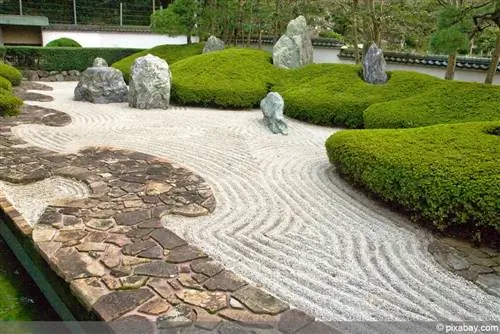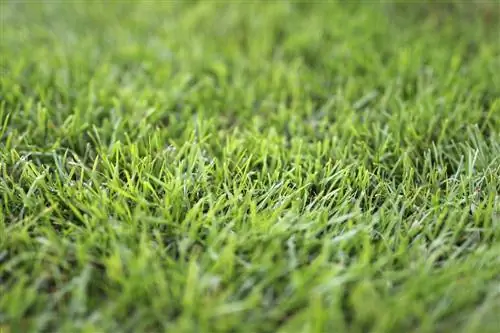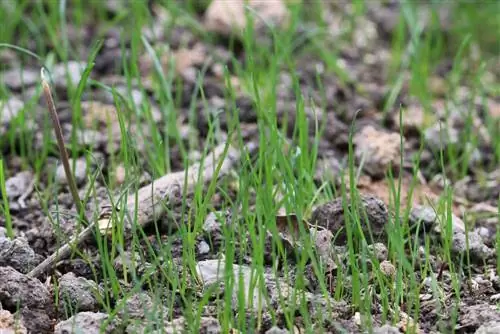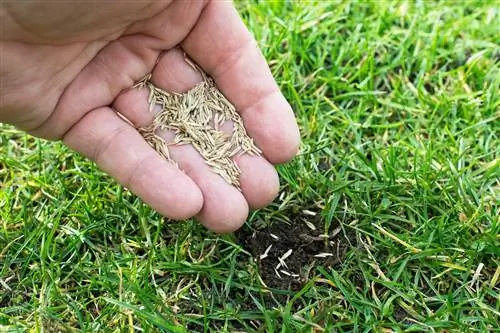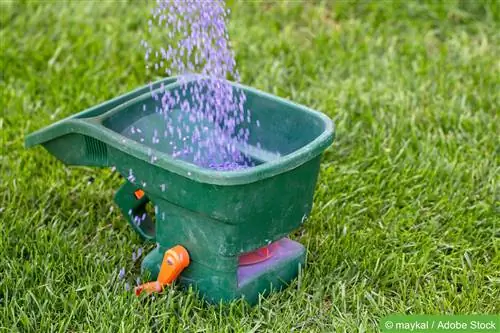- Author admin [email protected].
- Public 2023-12-17 03:39.
- Last modified 2025-01-24 12:45.
Monotone green spaces have become obsolete as a key element for creative garden design. A garden without lawn promises less maintenance and a better quality of life in the green realm. Home gardeners who are close to nature are looking for a decorative alternative for the benefit of insects, birds, hedgehogs and other creatures in the garden. We invite you to explore 5 alternatives to weed.
Ground cover as a lawn replacement
Ground cover plants are plants with low, creeping growth that primarily conquer their territory in width. If a ground cover has additional properties, such as resistance to wear and evergreen foliage, it comes into focus as the perfect alternative to grass. In combination with pretty flowers, the most beautiful variations make the garden without lawn a feast for the eyes and a feast for bees. The low-lying growth and sufficient tread resistance of the following alternatives to grass go hand in hand with reliable suppression of weeds. What you have to work hard for with weekly mowing, annual scarifying and repeated aeration for lawns is done naturally by ground cover plants. As soon as the creeping tendrils unite to form a dense network, bold weeds are left behind. The following overview presents the top 10 ground cover plants as lawn replacements in alphabetical order:
English chamomile 'Treneague' (Anthemis nobilis)
The English lawn chamomile does not have flowers, smells pleasant and does not need to be mowed. Many home gardeners value these advantages in order to make a garden without lawn beautiful and easy to care for. The 'Treneague' variety roots quickly, smells aromatic and is hardy.
- Growth width: 15-30 cm
- Growth height: 3-10 cm
- Flowering time: not applicable
Feather pads (Cotula dioica)
You can't see the potential of a single feather cushion plant in a pot as a lawn alternative. Planted as a group of 10 to 20 specimens, a dense, sturdy cushion of pretty leaflets forms within a short time.
- Growth width: 10-30 cm
- Growth height: 3-5 cm
- Flowering period: June to August
Golden Strawberry (Waldsteinia ternata)
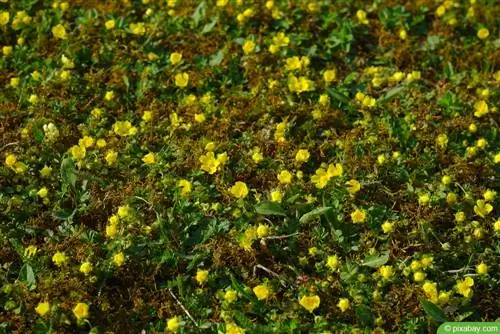
Convincing arguments speak for golden strawberries as an ideal lawn replacement. With creeping tendrils, the native perennial covers the ground with a dense cushion of evergreen, shiny leaves. In spring, yellow cupped flowers rise above the green carpet, which the first bees, bumblebees and butterflies really appreciate.
- Growth width: 30-60 cm
- Growth height: 10-15 cm
- Flowering period: April to June
Hazelroot (Asarum europaeum)
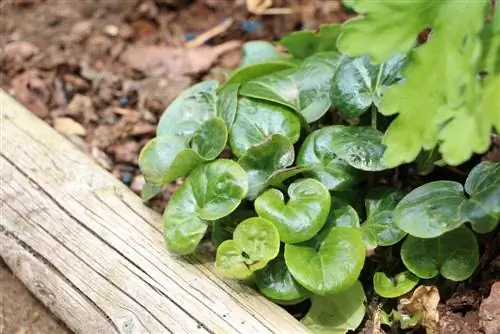
The native perennial is a problem solver if you want to completely green a spot in the garden with little light. Hazelroot masters moist, calcareous soil with flying colors and slowly but surely stretches out its long tendrils.
- Growth width: 20-25 cm
- Growth height: 5-15 cm
- Flowering time: March to April
Low Fat Man (Pachysandra terminalis 'Compacta')
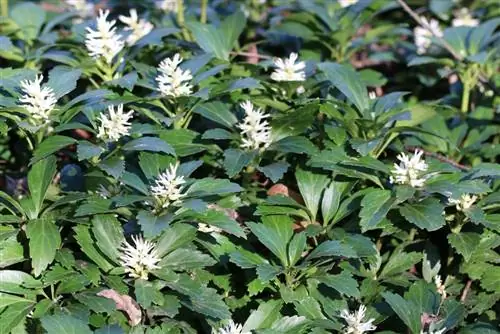
Where fat men gather in flocks of 10 per square meter, you won't mourn a lawn in your garden for long. With epically long, evergreen shoots, the frugal perennials form opaque mats. In early spring, white flower spikes shimmer discreetly and shyly between the evergreen leaves.
- Growth width: 30-40 cm
- Growth height: 8-12 cm
- Flowering time: April and May
Cushion thyme 'Golden Dwarf' (Thymus x citriodorus)
Cushion thyme transforms the garden without lawn into a feast for the senses. The premium variety 'Golden Dwarf' covers small and large areas with a solid carpet of gold-green decorative leaves that emit a seductive lemon scent. In late summer, purple flowers appear, which contrast picturesquely with the foliage. The sunnier the location, the more numerous the flower symphony of light purple panicles. Nobody wants to destroy so much floral splendor with a lawnmower.
- Growth width: 25-30 cm
- Growth height: 5-15 cm
- Flowering time: July and August
Roman chamomile (Anthemis nobilis v. ligulosa)
One of the best alternatives to grass is Roman chamomile, which is also aptly known as lawn chamomile. As a lawn replacement, the fragrant ground cover easily tolerates occasional foot traffic. Occasional mowing with the blade bar set high is sufficient for a well-groomed appearance.
- Growth width: 15-25 cm
- Growth height: 10-20 cm
- Flowering period: June to August
Sand thyme, field thyme (Thymus serpyllum)
Are you looking for an alternative to grass that shows its best side in full sun, sandy and dry locations? Then please turn your attention to sand thyme. As the plant name suggests, the herb plant has a penchant for gravelly, sandy and dry conditions. In contrast to its classic counterparts, field thyme has chosen to grow with creeping shoots during its evolution.
- Growth width: 20-25 cm
- Growth height: 8-10 cm
- Flowering period: June to August
Tip:
To make room for a garden without lawn, the sod cutter comes in handy. The motor-driven device peels off old lawn in strips using rotating blades. All you have to do is roll up the peeled grass strips and dispose of them. You can rent the practical lawn peeling machine cheaply for one day in well-stocked hardware stores or from machine rental companies.
Star Moss, Awl Mastwort (Sagina subulata)

When fluffy green floor cushions invite you to walk barefoot, star moss comes in handy as a picturesque alternative to grass. The lighting conditions at the location are the same for the evergreen ground cover. Pfriemen's mastwort will green any sunny to shady area as long as the soil has sufficient moisture. A planting density of 15 young plants per square meter is recommended so that a compact, walkable, green carpet is quickly formed that does not need to be mowed.
- Growth width: 20-25 cm
- Growth height: 3-5 cm
- Flowering period: June to August
Carpet Verbena (Phyla nodiflora 'Summer pearls')
Are you looking for a walk-on sea of flowers to replace your lawn? Then we would like to recommend the wonderful carpet verbena 'Summer Pearls' to you. The perennial shines as a flowering ground cover, preferably in a sunny location. Annoying mowing is a thing of the past, as is regular watering during summer droughts.
- Growth width: 30-40 cm
- Growth height: 5-7 cm
- Flowering period: May to October/November
ATTENTION:
The other side of the coin is that none of these 10 ground cover plants can boast the resilience of a sports and play turf. The attribute tread resistance refers to occasional walking. Children playing and dogs running wild leave unmistakable traces within a short period of time, even on premium alternatives to grass. A good reason to look into other alternatives to weed, which this guide will introduce to you below.
Japanese Garden
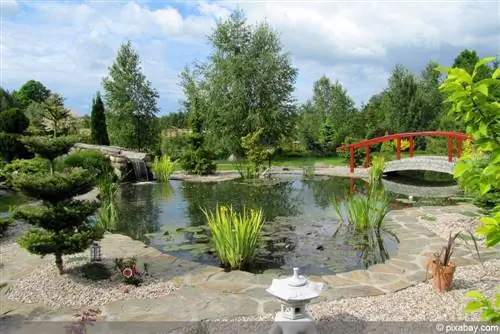
The fascination of Japanese gardens is based on a harmonious combination of stones, plants, water and design elements. Even in the smallest of spaces, a Japanese garden serves as a creative alternative to grass. The following overview summarizes the essential components:
- Stones: Gravel spread over the surface and raked into waves, solitary boulders as symbols of turtles or dragons
- Plants: Conifers, such as thuja, deciduous shrubs, such as rhododendrons, flowers, such as peonies and irises
- Water: Stream, pond, biotope and swimming pond for large areas, water-filled stone pots in the allotment garden
The focus as design elements is on decorative items that demonstrate a recognizable reference to Asian garden philosophy. These include stone lanterns, pagodas, benches and steles. Where there was once a lawn, a Japanese fire basket on a gravel surface invites you to linger.
Zengarten
If you want to stay true to the clean lines of a lawn garden, look to the Zen garden as an alternative to grass. The Far Eastern concept dates back to the 6th century and means “dry landscape” when translated. The leitmotifs of Asian Zen teachings find expression in a puristic garden design that dispenses with plants and grass. The reduction to the essentials is achieved with stones and sand as well as moss as the only concession to the flora.
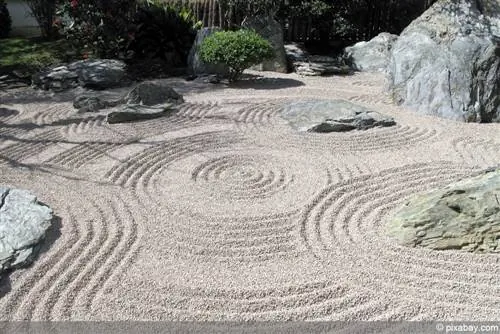
Boulders and stone sculptures serve as focal points. In the gaps, wave-shaped areas of gravel and sand decorate the Zen garden. It is up to you to decide how sand, gravel and moss areas relate to each other. It is important to note that a partially shaded to shady and moist, cool location is important for the growth of moss.
Cottage Garden
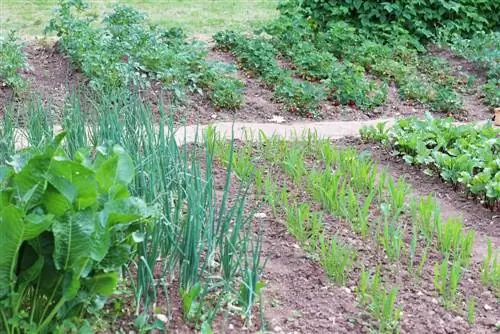
If you want the lawn in the garden to give way to blooming romance and living gardening traditions, you can't ignore the historic cottage garden. The epitome of rural nostalgia, the traditional garden concept combines he althy vegetables with colorful flowers, tasty herbs and juicy fruit. The following design cornerstones characterize a cottage garden as an opulent alternative to grass and leave room for contemporary variations:
- Basic framework: 4 square or rectangular beds with a cross as access
- Plant plan: 3 beds with vegetables, 1 bed with herbs and native crops
- Enclosure: Wooden fence with berry bushes or mixed hedge with native flowers and fruit trees
- Centerpiece: Rose circle, fountain, pavilion, fruit tree or black elderberry
If you want to consistently avoid grass, cover the paths 6 to 8 centimeters high with bark mulch. Decorative elements stylishly round off the romantic charm of the cottage garden. A bench, a rustic, planted wheelbarrow or a homemade barbecue made of fired bricks allow the viewer to dream of the good old days without wasting a thought on monotonous lawns.
Water Worlds
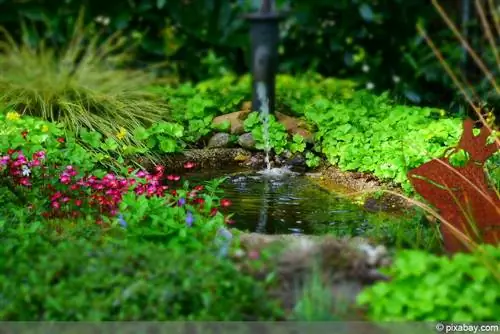
Water worlds in a variety of sizes and design variations refer lawns to the design substitute bench. We have compiled the most beautiful alternatives to grass with water for you below:
- Natural pond: different water depths, varied planting, wooden walkway, stream for water supply
- Swimming pond with natural purification: 60% plants and 40% swimming area, waterfall as additional bathing pleasure
- Stream: ideal for the hillside garden without lawn with flowering bank plants instead of grass
Water worlds as alternatives to grass are not a question of property size. If there is not enough space for a pond and stream, lively water features replace the former lawn. A multi-tiered rock fountain, framed by a circle of gravel, looks close to nature. Steel figures with collecting basins are elegantly presented, with a paving made of natural stone slabs at their feet.

